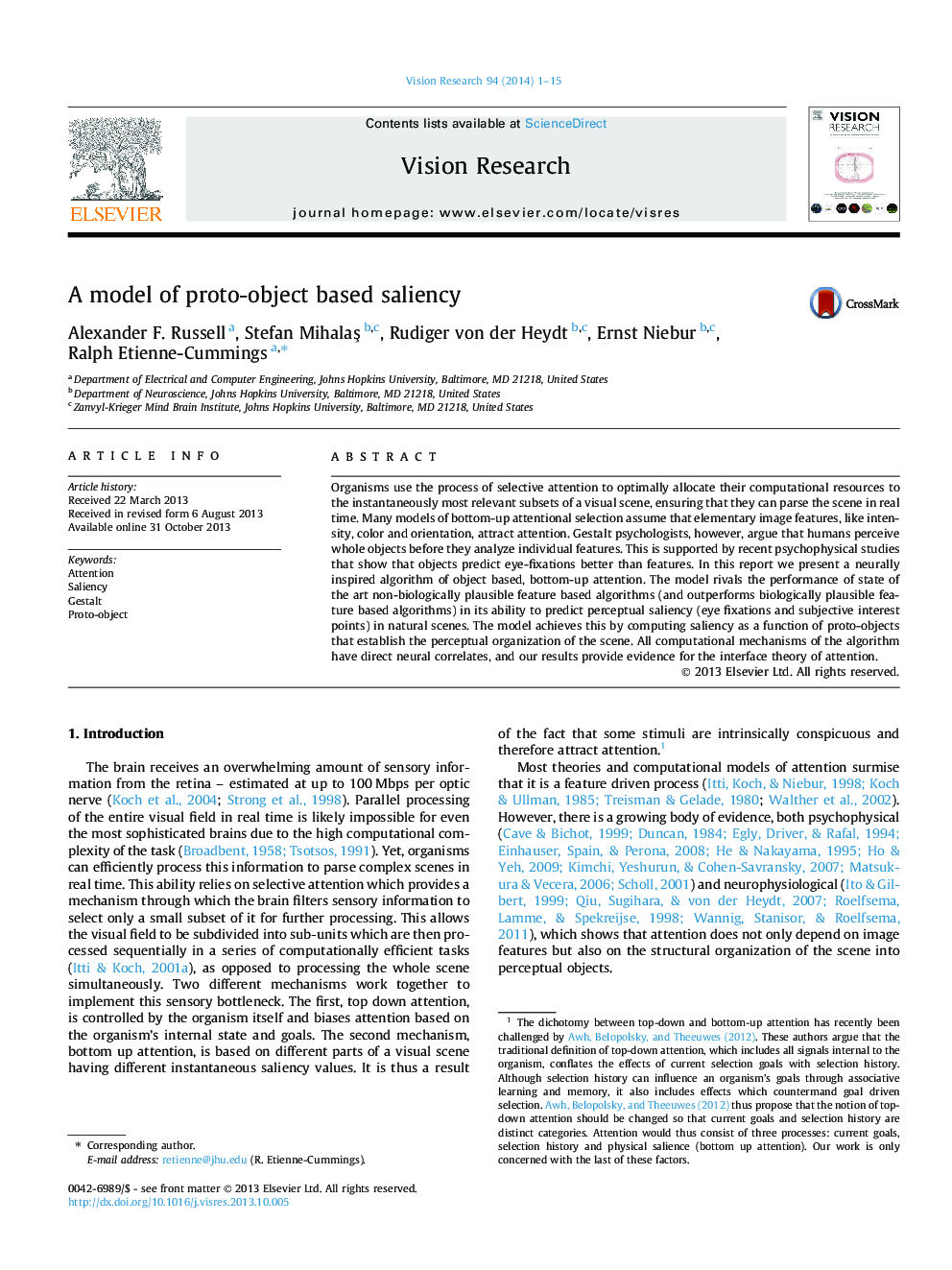| Article ID | Journal | Published Year | Pages | File Type |
|---|---|---|---|---|
| 6203493 | Vision Research | 2014 | 15 Pages |
â¢Our model shows proto-objects are important in predicting perceptual saliency.â¢Border ownership cells (discovered in monkey V2) help provide perceptual scene organization.â¢Border ownership responses are integrated with gestalt factors to estimate proto-object locations.â¢The model provides support for the interface theory of attention.
Organisms use the process of selective attention to optimally allocate their computational resources to the instantaneously most relevant subsets of a visual scene, ensuring that they can parse the scene in real time. Many models of bottom-up attentional selection assume that elementary image features, like intensity, color and orientation, attract attention. Gestalt psychologists, however, argue that humans perceive whole objects before they analyze individual features. This is supported by recent psychophysical studies that show that objects predict eye-fixations better than features. In this report we present a neurally inspired algorithm of object based, bottom-up attention. The model rivals the performance of state of the art non-biologically plausible feature based algorithms (and outperforms biologically plausible feature based algorithms) in its ability to predict perceptual saliency (eye fixations and subjective interest points) in natural scenes. The model achieves this by computing saliency as a function of proto-objects that establish the perceptual organization of the scene. All computational mechanisms of the algorithm have direct neural correlates, and our results provide evidence for the interface theory of attention.
